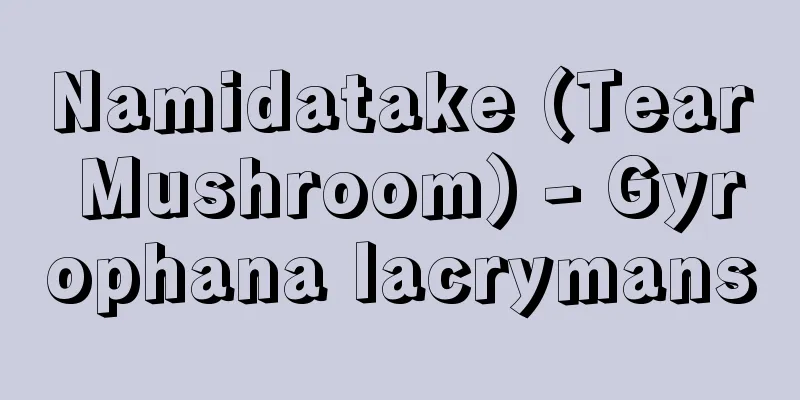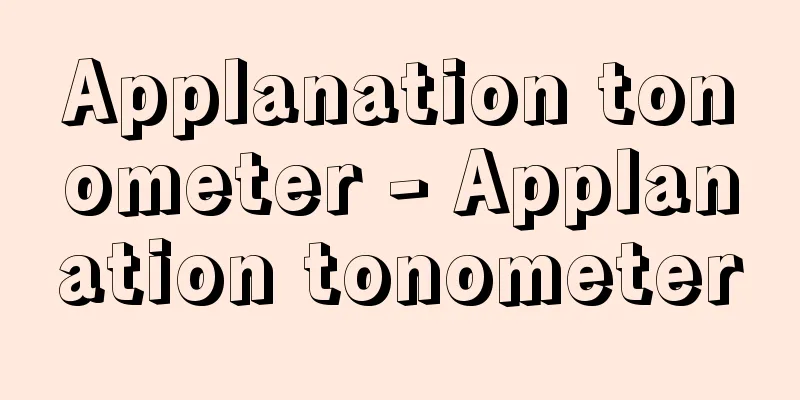Electric conduction - denki dendo (English spelling)

|
When a battery is connected to both ends of an object and a voltage is applied, an electric field is generated within the object. The phenomenon in which charges move due to the influence of this electric field, and electric current flows, is called electrical conduction. The current per unit cross-sectional area is called current density, and the relationship between current density and electric field is expressed as J = σ E , where J is the current density and E is the electric field. In many substances, including metals such as copper, aluminum, and iron that we are familiar with, the directions of J and E are the same, so σ is a normal real number, which is called electrical conductivity or electrical conductivity, and its reciprocal is resistivity. In some crystals with low symmetry in the atomic arrangement, the directions of J and E may be different, and in this case σ is expressed as a quantity called a tensor, called the electrical conductivity tensor. When the particles that carry the charge that is the source of the current are electrons, it is called electronic conduction, and when they are ions, it is called ionic conduction. The substances with the highest electrical conductivity are metals, and substances with almost zero electrical conductivity are insulators. In between them, there is a group of substances called semiconductors. The reason for this difference in electrical conductivity is well explained by band theory. It has been discovered that, depending on the material, the electrical conductivity becomes infinite at low temperatures, i.e., the electrical resistance becomes zero. This phenomenon is called superconductivity. [Seiichiro Noguchi] [References] | |©Shogakukan "> Electrical conductivity (at room temperature) Source: Shogakukan Encyclopedia Nipponica About Encyclopedia Nipponica Information | Legend |
|
物体の両端に電池を接続して電圧をかけると、物体中に電場が生ずる。このような電場の影響で電荷の移動がおこり、電流が流れる現象を電気伝導という。単位断面積当りの電流を電流密度といい、電流密度と電場との関係は、電流密度をJとし電場をEとすると、J=σEで表される。私たちがよく知っている銅、アルミニウム、鉄などの金属をはじめ、多くの物質では、JとEの方向が同じなので、σは通常の実数であって、これを電気伝導度または電気伝導率とよび、その逆数が抵抗率である。原子配列の対称性の低いある種の結晶では、JとEの方向が異なる場合があり、このときのσはテンソルとよばれる量で表され、電気伝導度テンソルという。電流の源となる電荷を運ぶ粒子が電子である場合を電子伝導、イオンである場合をイオン伝導という。電気伝導度のもっとも大きい物質は金属であり、ほとんど0の物質が絶縁体である。その中間に、半導体とよばれる一群の物質がある。電気伝導度にこのような差が生ずる理由は、バンド理論によってよく説明される。物質によっては、低温で電気伝導度が無限大、すなわち電気抵抗が0になる現象が発見されている。これを超伝導という。 [野口精一郎] [参照項目] | |©Shogakukan"> 電気伝導度(室温の値) 出典 小学館 日本大百科全書(ニッポニカ)日本大百科全書(ニッポニカ)について 情報 | 凡例 |
<<: Electrical conductivity anomaly
Recommend
Adigei
...A general term for the three ethnic groups of ...
Fear
...the general term for a cone-shaped volcano and...
Bambuti
…Unlike the San, the Pygmies are also hunter-gath...
Inamuragasaki - Inamuragasaki
A cape jutting out from the center of the coast o...
Coastal Trade (Japan-Soviet) - Enganboueki
... The Soviet Far East and Eastern Siberia are c...
Izuhara Domain
The name was changed by the Tsushima Domain, whose...
Maritime traffic management
...Artificial restrictions on the free movement o...
Religious order - Religious order
A monastic community recognized by the Roman Cath...
isomer
...When two or more chemical species have the sam...
Sir Robert Anthony Eden, Earl of Avon
British politician. He served in the First World ...
Nonlinear optics
Generally, when light is incident on a material, ...
Marenzio (English spelling) Luca Marenzio
Italian composer. He served Cardinal Luigi d'...
White melon - White melon
Scientific name: Cucumis melo var. conomon Plant. ...
Liquid ammonia method - Ekitai anmoniaho
…The Zahn process (intermediate salt process) add...
Cumulative Book Index
...In 1977, the Index Society was founded in the ...









